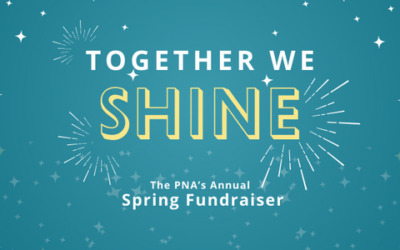Editor’s Note: This article is from Michael McCarthy, MD, at My Local Health Guide, a health news website for the Puget Sound region. While it’s not neighborhood specific, he felt it was important to share with neighborhood news websites.
The number of cases of whooping cough, or pertussis, reported in Washington state this year has topped 4,500 — the highest number reported in 70 years — but the epidemic appears to be slowing as the number of new cases being reported has begun to drop off, Washington State Department of Health officials reported Thursday.
Nonetheless, health officials warned, the bacteria that causes whooping cough–Bordetella pertussis— is still actively circulating in the community and the risk of infection remains real.
“We’re encouraged to see the pace of new cases in our state slowing,” said Secretary of Health Mary Selecky,” but we are not completely out of the woods.”
The number of whooping cough cases in the state exploded in 2011.
The epidemic’s course is varying from community to community: some communities are seeing a decline in new cases but others continue to have high numbers of new cases reported.
To date, the counties with the highest rates on infection have been: Ferry, Jefferson, Lewis, Pierce, San Juan, Skagit, Stevens, Walla Walla, Whatcom, and Yakima.
Even when cases fall, health officials noted, the bacteria always continues to circulate and cause infections even when there is no epidemic.
Therefore, it is important for young children, teens and adults to get vaccinated and keep up-to-date with recommended booster shots, health officials said.
Vaccination not only helps protect individuals from the infection, it helps protect newborns who cannot be vaccinated until they’re 2-months-old and who aren’t fully protected until they’ve had four doses, at 15 to 18 months.
Whooping cough is particularly dangerous for babies.
An infant with whooping cough may have trouble feeding and breathing and may turn bluish from not getting enough oxygen — and the infection can even be fatal, health officials said.
Older babies and kids with whooping cough often have coughing spells so severe it’s hard for them to eat, drink, breathe, and sleep.
This year in Washington 339 infants under 1 year of age developed whooping cough, 66 of whom were hospitalized.
Infection rates have also been high among adolescents, aged 10 to 13, who have made up 22 percent of cases.
Whooping Cough
Pertussis, the whooping cough bacteria — CDC photo.
Whooping cough, also known as pertussis, is a highly contagious respiratory illness spread by coughing and sneezing.
It is caused by a bacteria called Bordetella pertussis. The name, pertussis, comes from Latin, from per-‘away, extremely’ + Latin tussis ‘a cough.’
According to the U.S. Centers for Disease Control and Prevention, in the 20th century, pertussis was one of the most common childhood diseases and a major cause of child death in the United States.
Initially, an infection may seem like just a cold. However, during this phase of the infection, which can last several weeks, a person can spread the disease to others.
Patients typically then go on to develop a severe, persistent–often wracking–cough that can last for several more weeks.
The coughing fits can be prolonged and are often followed by a long inhalation that causes the “whooping” sound that gives the disease its name.
The bouts of coughing can leave victims breathless and unable to eat, drink or sleep. Complications of the infection include pneumonia, seizures and death.
Whooping cough can affect people of all ages — but is most serious in infants, especially those too young to get vaccinated or who aren’t fully protected.
There is a vaccine that can prevent infection, but it is not effective in newborns or infants and it wears off with time.
When a baby gets whooping cough, it is usually from a sibling or an adult member of the family, health officials said. The best way to protect these vulnerable children, they said, is to have everyone around them be up-to-date with their vaccinations.
“With family and friends gathering for the holidays, disease can spread easily. It’s important for adults and teens to be current on their whooping cough vaccines to protect babies from this serious illness,” said Selecky. “And of course, remember to wash your hands often, cover your cough, and stay home when you’re sick.”
The Washington State Department of Health recommends:
All adults should get a one-time Tdap booster, and kids should get their whooping cough vaccinations (DTaP) on schedule. It’s a five-dose series that starts when they’re 2 months old and is complete before age 7. They need one booster (Tdap) at age 11 or 12.
How do I get a vaccine?
Washington purchases and provides all recommended vaccines for kids through age 18, available from health care providers across the state.
Health care providers may charge an office visit fee and a fee to give the vaccine (an administration fee). People who can’t afford the administration fee can ask to have it waived.
Over the summer the state also purchased whooping cough vaccine for uninsured and underinsured adults – many local health agencies still have that vaccine available.
For help finding a provider or immunization clinic, contact your local health agency or the Family Health Hotline at 1-800-322-2588.
More information, including weekly case counts, is available on the Department of Health’s whooping cough website.




